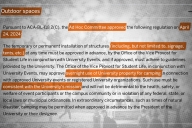You have /5 articles left.
Sign up for a free account or log in.

AlexSecret/iStock/Getty Images Plus
How can we best motivate students? That’s a question that has always challenged faculty members. But with students generally showing signs of decreased academic preparedness and increased personal struggles after the COVID-19 pandemic, it’s one that may be more resonant now than ever.
It’s easy to forget how the same college students who seem so unmotivated these days once were kids who incessantly asked questions about the world around them. Young children naturally explore their environment, directed by instincts to follow their own curiosity and sense of wonder. By the time they reach our college classrooms, however, students have been taught that the main rewards to pursue academically have less to do with seeking understanding and more to do with points, grades and career advancement. Probably without realizing it, the typical student has shifted at some point in their school years from being intrinsically motivated to learn for its own sake to being extrinsically motivated to instrumentally benefit from the activity. Once they get to college, the kinds of questions that used to come naturally to kids either are suppressed or don’t rise to the surface of their thinking at all.
In recent years, instructors have adapted by increasingly giving students more responsibility for learning. The flipped classroom, for example, requires students to do some independent work on their own before coming to class. As part of that, faculty members fairly commonly assign some preclass testing, so that students do their work in a timely way and take their homework seriously. Many students probably do the bare minimum work necessary on those typically open-note, untimed, online quizzes—perhaps skimming, reading bolded terms or using Google or ChatGPT to find the answers. That strategy may help students be more prepared for classroom activities than not having any system of accountability, but it also may reinforce the extrinsic motivation to learn. The primary learning tasks, again, naturally lend themselves to perceptions of being hoops to jump through to get points and eventually a high course grade.
In response to all this, and inspired by Peter Gray’s notion of an “idea-centered approach” to teaching and learning, I’ve tried to make my courses intentionally “question-centered.” The question-centered course seeks to encourage in the classroom “knowledge emotions”—such as surprise, interest, confusion, curiosity and wonderment—as students inquire deeply into great course-related phenomena and concepts that intrigue them
For instance, when I teach Introduction to Psychology, I organize the course around four major questions: 1) How do we know what we know? 2) How can students thrive in college? 3) Why do we do what we do? and 4) How can we be happy? These questions are driven by consensus key learning outcomes for the course, but I frame them in ways that I hope will catch students’ interest.
On the first day of class, I introduce students to those questions, explaining to them that they are our essential focus for the course and our primary task is to explore them together, guided by the best research and thinking available in our academic discipline. At this point, I may have students discuss and record their initial thoughts about the questions so we can compare and contrast their understanding of them later, after having covered them. Soon thereafter, we discuss the inherent value of questioning and, inspired by Stuart Firestein’s TED talk on the topic, the value of well-informed ignorance in which the focus is not so much on memorizing what we do know as it is on exploring what we don’t. As we progress through the semester, I contextualize particular class sessions within the broader questions we’re considering but also bring up more specific questions of the day.
Rather than preclass quizzes on textbook readings, I ask my students to write regularly in a journal outside class about the material they learned during the day and then bring to class their three best unanswered questions about that material. Those questions may concern what students honestly don’t understand, what they struggle to believe is true or what they’re prompted to wonder about that the assigned material doesn’t address. Successfully identifying and elaborating on such questions is worth a small number of points—which holds students accountable for being prepared for class, similar to preclass quizzes but in a way that is more intrinsically motivating.
Further, the questions become the basis for class discussions. For example, it’s fairly typical for part of a class session to include small group discussions in which students share and discuss their questions, identify as a group their best overall question, and then raise that question to the class for broader consideration. We also discuss what makes for a good question, hopefully increasing students’ ability to ask critical questions more generally.
At the end of the semester, I grade each student on the compilation of their questions as well as an overall reflection on the assignment and how they observed their questions changing over the course of the term. This helps prepare them for part of their final exam, which involves an essay in which they identify their best question from the course, defend why that’s an important question, share what they learned about the question in the course and elaborate on what could be done to further explore the question in the future—for instance, through a research study they propose in some detail.
A Fire, Not a Bucket
What do we most hope students will get out of our courses? It probably goes without saying that we wish many things for our students. However, if pressed to choose only one, I would say I hope students remember how learning—and the process of inquiry itself—can be meaningful and enjoyable for its own sake. An intrinsically motivating focus has the potential to lead students to a better path than an extrinsically motivating one, especially over the long term.
The question-centered course may bring to light questions students previously didn’t think much about. As students engage in the process of discerning what questions they most resonate with, they may make progress in the primary adult task of determining their big life interests and overall life direction.
For example, a few years ago, a student consistently brought to class questions that circled around topics related to thriving and well-being. Those questions started off being rather general, but as the term progressed, she became more specific. By the time I asked her to complete a research proposal near the end of the term, she’d homed in on the question of how mindfulness and specifically breathing exercises impacted well-being. Encouraged to ask questions about what sparked her curiosity through the course, the student developed a new connection with a question and a broader area of interest. She later decided to pursue a career researching and teaching breathing techniques to improve clients’ well-being.
In all of this, I’m reminded of a quote often attributed to William Butler Yeats: “Education is not the filling of a bucket, but the lighting of a fire.” If we can help light a fire for students, we may go a long way toward inspiring the kinds of natural processes of learning and development that may influence them throughout their entire lifetime.








